Are you exasperated by sound issues on your Windows 10 ? Don't worry, we're here to help! In this guide, we'll show you how to reset your audio settings and fix the most common sound problems in a few simple steps. Ready to find an optimal sound experience? Follow the leader !
Step 1: Check the connections and the equipment

Before resetting the audio settings, it is important to check that your speakers or headsets are properly connected and that the equipment works. Here are some tips to make sure everything is in order:
- Check that the cables are well connected and in good condition
- Make sure that the volume is not cut or adjusted at least
- Test your speakers or helmets on another device to confirm their proper functioning
Step 2: Access audio settings
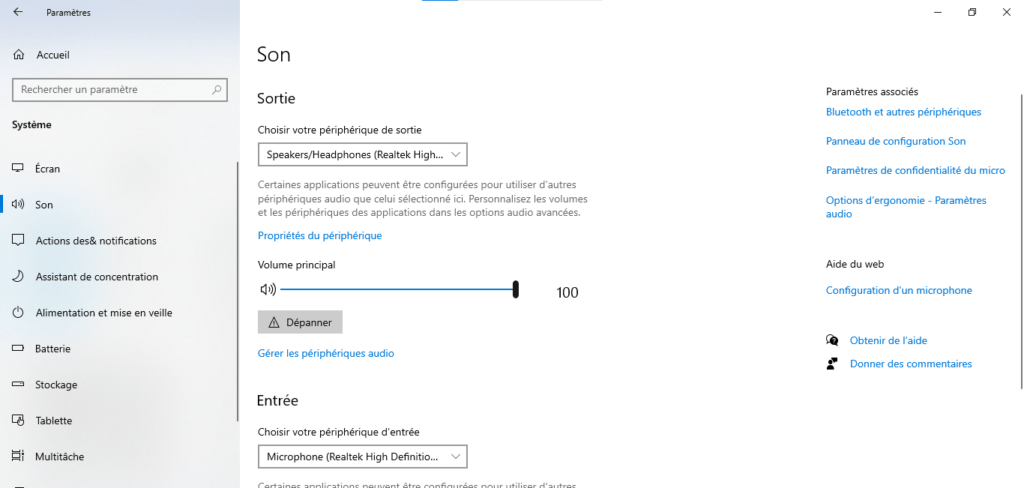
If you've verified that your hardware is working properly, it's time to take a look at your computer's audio settings. To access the audio settings on Windows 10 , follow these steps:
1. Click on the speaker icon in the taskbar, bottom right of the screen
2. Press the "sound" button to open the audio settings
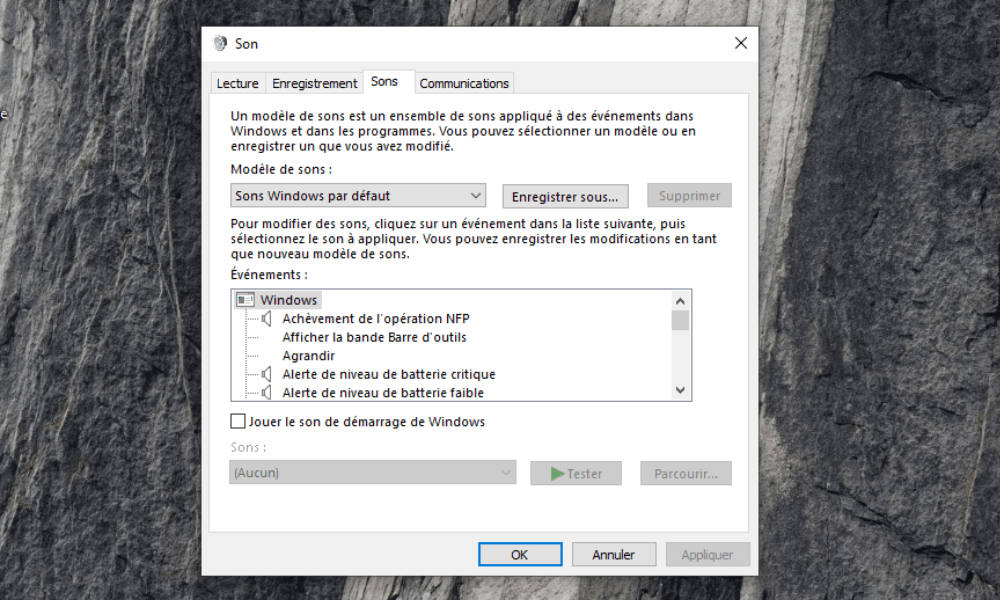
Step 3: Reset audio settings
Now that you have access to the audio settings, it's time to reset them. Here's how to do it:
1: In the "Reading" tab, identify the audio device you want to reset (speakers or helmet) and click on it with the right button

2: Select "Properties"
3: Go to the "Levels" tab and make sure the volume is adjusted correctly
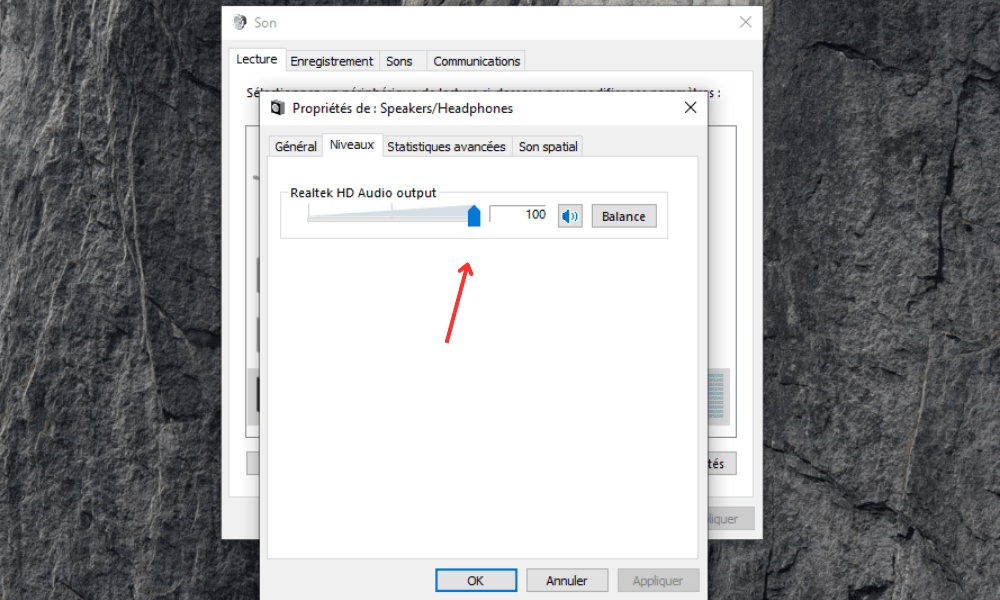
4: Go to the "Improvement" tab and check the "Disable all sound improvements" box (this option can be named differently depending on the manufacturers)
Click on "Apply" then "OK" to validate the changes
If you happen to not see this tab, it may mean that your audio driver does not support this feature or that it is already disabled by default, as in this case:
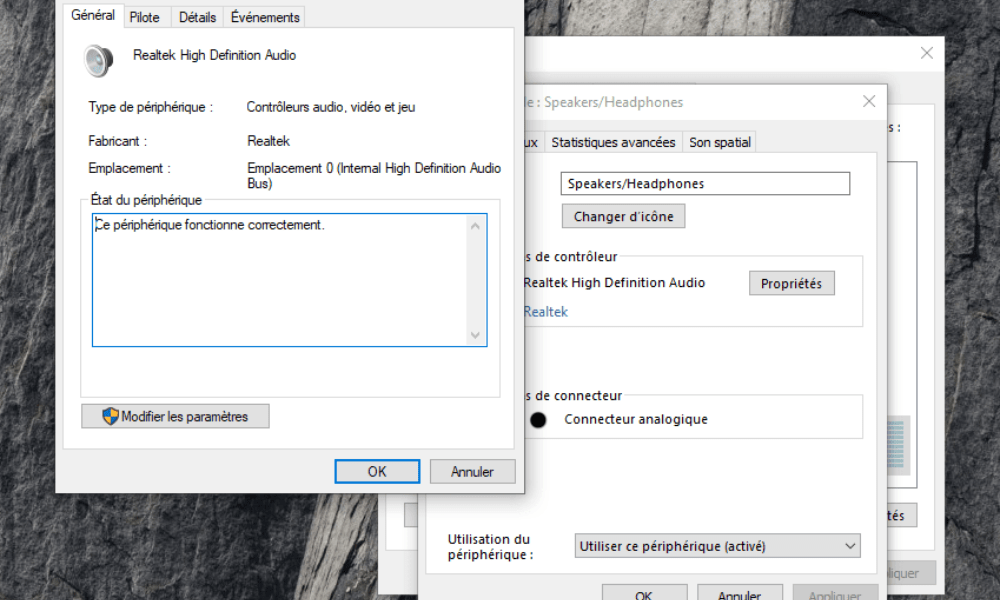
You might also like this article: How to block the use of USB keys in Windows ?
Step 4: Update audio drivers
If resetting your audio settings does not resolve your issue, your audio drivers may be outdated or corrupted. Here's how to update them:
1. Right click on the "this PC" icon on your desktop or in the file explorer and select "Manage"

In the "Computer Management" window, click on "Device manager"

Look for "audio, video and game controllers" and click on the small triangle to develop the list
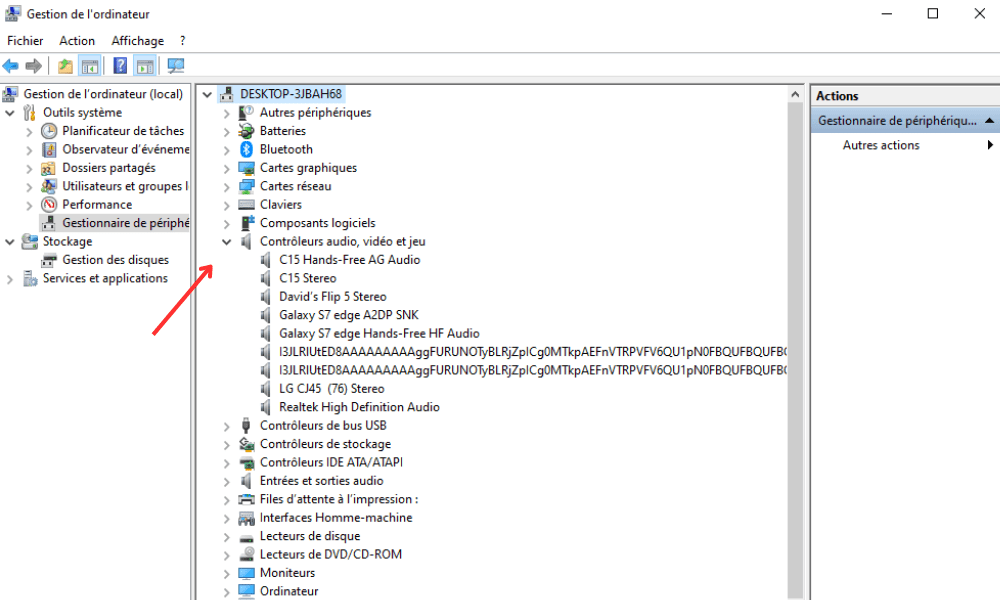
Right click on the audio pilot of your choice (for example, Realtek High Definition Audio ) and select "Update the pilot"
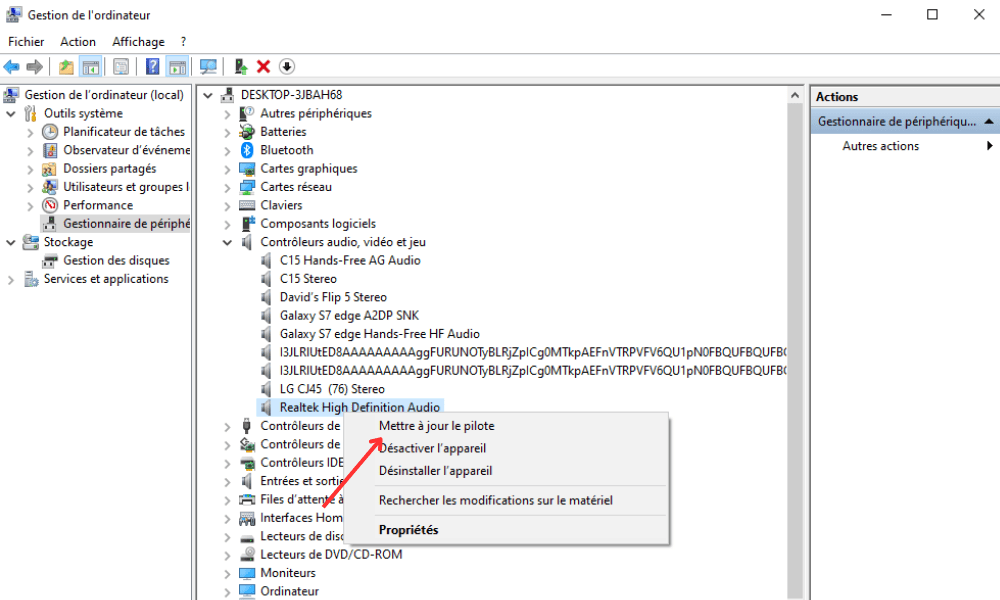
Choose the "automatically search for drivers" option then let Windows Find and install the update
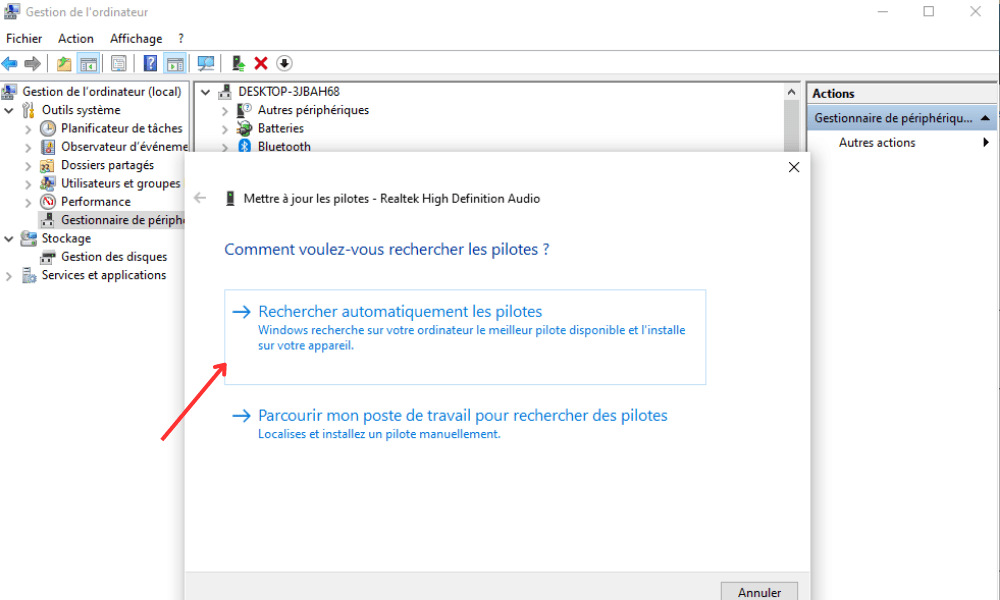
Once the drivers are updated, restart your computer for the changes to take effect.
Step 5: Reinstall audio drivers
If updating the audio drivers still does not resolve the issue, you can try reinstalling them:
- Return to the "Device Manager" as explained previously
- Right click on the audio pilot and select "Uninstall the device"
- Restart your computer. Windows should automatically reinstall audio drivers upon reboot
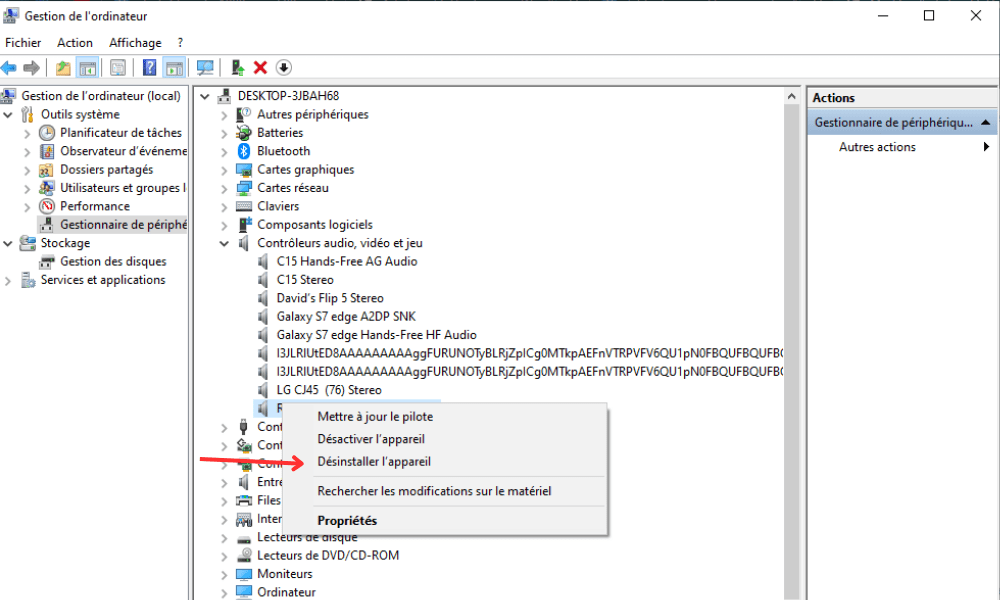
After following these steps, Windows 10 computer sound issues should be resolved. If this is still not the case, the problem may be caused by a hardware defect or a conflict with other software . In this case, do not hesitate to contact the technical support of your computer manufacturer or consult an IT professional.
Comparison table of solutions to resolve audio problems
| Solution | Benefits | Disadvantages |
|---|---|---|
| Hardware check | Simple and fast | Does not fix software issues |
| Reset of audio settings | Can solve many common problems | Does not work if drivers are outdated |
| Updating audio drivers | Ensures optimal operation of equipment | May require an internet connection |
| Reinstalling audio drivers | Can fix corrupted driver issues | May take longer than other solutions |
FAQs
What are the best apps for managing audio settings on Windows 10?

There are many third-party apps that can help you manage and optimize audio settings on Windows 10. Here are some of the best:
- Equalizer APO: an open source parametric and graphic equalizer that offers many customization options.
- FxSound Enhancer: a paid application that improves sound quality by adding effects and enhancements.
- Boom 3D: a paid app that offers 3D surround sound and customizable EQ effects.
- Voicemeeter: a free application that allows you to mix and manage different audio devices in real time.
Remember to check the compatibility of these applications with your hardware and audio drivers before installing them.
How to reset audio settings on a Windows 10 laptop?
Resetting audio settings Windows laptop is similar to the procedure described in the article for a desktop computer. Here is a summary of the steps to follow:
- Access the audio settings by clicking the speaker icon in the taskbar.
- In the "Reading" tab, select the audio device (integrated speakers or headphones) that you want to reset, then right-click Etselect "Properties".
- Access the "Improvements" tab and check the "Disable all sound effects" box. Click on "Apply" then on "OK" to save the changes.
- If the problem persists, try updating or reinstalling the audio drivers as explained in the article.
By following these steps, you should be able to reset your laptop's audio settings in Windows 10.
Can you use Windows 10 diagnostic tools to troubleshoot sound issues?
Yes, Windows 10 has built-in diagnostic tools that can help you troubleshoot sound issues. Here's how to use the Audio Troubleshooter:
- Right-click the speaker icon in the taskbar and select "Solving sound problems".
- The troubleshooter will run and automatically detect sound problems on your computer.
- Follow the on-screen instructions to resolve any issues found.
Note that this tool may not resolve all sound issues and you may need to follow the steps in the article to resolve some specific issues.
Conclusion
Sound problems on Windows Windows can be frustrating, but they are often easy to resolve by following the tips and steps outlined in this FAQ. Feel free to check out the other sections of this article for additional information on resetting audio settings , updating drivers , and using third-party applications . If problems persist, contact your computer manufacturer's technical support or consult an IT professional for assistance.




